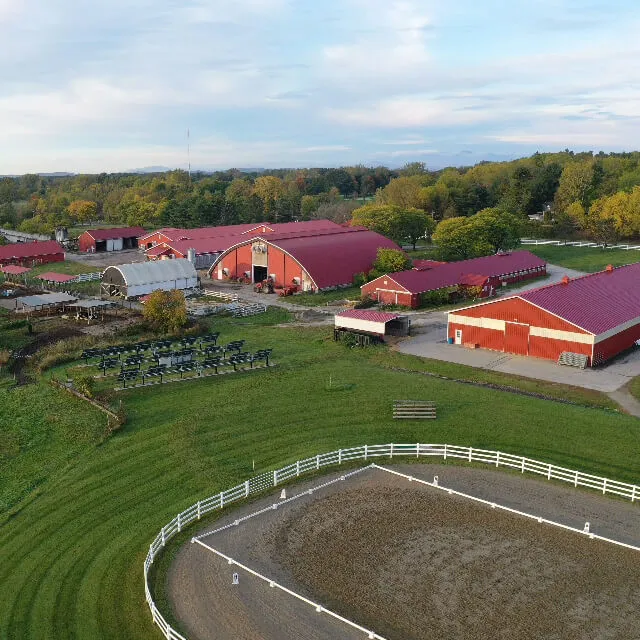
Outdoor Safety Resources
For info on outdoor hazards such as Bees, Ticks, Poisonous plants, Lightning, Extreme Temperatures and Lakes and Waterways visit Outdoor Safety.
Outdoor Safety WebpageField Work/Trip Guidelines
1. Develop a Schedule a Plan
- Develop a detailed schedule and plan for field activities using the Health and Safety Plan Template (PDF)
- Meet with all participants ahead of time to familiarize them with goals, expectations, and risks.
2. Provide and Document Training
If any field activities require special skills, be sure to provide and document any necessary orientation and training provided to the participants.
3. Consider Hazards
Consider hazards specific to the activity as well as generic field hazards (see the Outdoor Hazards section, above)
4. Complete Acknowledgement of Risk Form
Have each participant complete the Acknowledgement of Risk form (PDF). The trip leader keeps a completed copy of this form for each participant.
5. Maintain Participant List and Emergency Contacts
Maintain a list of names and emergency contacts of all participants that includes a list of participants' medical conditions which might require emergency care or special treatment (from completed Acknowledgement of Risk Form). A copy of the list of the emergency contact names should also remain with the department administrative office, along with a copy of the itinerary and locations.
6. Cell Phone and First Aid
- Bring a cell phone and first aid kit.
- Make sure the area you are going has cell service!
Radios and Other Emergency Details
- If going to a remote area, consider having radios or other methods to reach emergency personnel.
- It is recommended that someone in the group be trained in First Aid and/or CPR.
9. Report All Injuries
Report all incidents of injury to the UVM Department of Risk Management.
Transportation
Try to arrange group transportation using a UVM owned or leased vehicle. Use of personal staff or faculty vehicles will make those employees primarily responsible if any accident should occur. Students who elect not to travel with the group should complete an Alternative Transportation waiver (PDF).
All drivers must have a current UVM driver certification status. The certification process requires a Motor Vehicle Record check and two online trainings and can take up to 30 days. Apply to become a UVM certified driver.

Farm Safety Program
Review the Farm Safety Program for specific outdoor research locations.
The Department of Environmental Health and Safety works in partnership with individuals and groups both on and off-campus to assess the risks of farm and field activities in order to ensure that work is performed using proper controls and best safety practices.
UVM's Miller Research and Education Complex (MREC), Horticulture Research and Education Center (HREC) and Morgan Horse Farm come with unique safety hazards unlike those in a typical indoor research lab environment. Additionally, Jericho Research Forest and Proctor Maple Research Center are other off campus facilities where both outdoor and indoor research is conducted.
Farm Safety
Roles and Responsibilities
- Supervisors must keep a roster of personnel who are authorized to work at the farm and basic information about the hazards present.
- Update this information at a minimum of every 6 months or as hazards or personnel change.
- Supervisors may designate a Farm Safety Officer to help maintain this registration.
Visit the Roles and Responsibilities page for more information.
Hazard Identification
Evaluate Controls and Hazards
Evaluate how the hazards will be controlled using OSHA's hierarchy of controls. This may include engineering controls, administrative controls, and personal protective equipment.
Tools to help with the assessment and documentation include Chemical Use Planning Form (PDF), Standard Operating Procedures, and other types of hazard assessments. Risk Management and Safety, Physical Plant Department (PPD), and the Training and Compliance Office (TCO) are also available to assist.
For more information visit the Recognizing and Assessing Hazards page.
Waste Management and Environmental Protection
Farm workers must determine the appropriate disposal method for all wastes generated on the farm, including hazardous and non-hazardous wastes. Types of hazardous waste may include chemical waste, biological waste, sharps, and universal waste (e.g. CFLs, batteries, ballasts, electronic waste). Types of non-hazardous waste may include uncontaminated waste and broken glass, lab trash, and recyclables.
For more information visit the Waste Disposal and Management Page.
Emergency Response Planning
Each person working on the farm should be trained and prepared to respond to an emergency. Plan ahead to help minimize injury to personnel, damage to equipment and facilities, and reduce the potential for a hazardous release to the environment.
For more information visit Laboratory Emergency Response.
Training and Information
Each farm worker must complete a farm worker orientation checklist that goes over the following: training regarding hazardous materials, farm procedures, equipment, the means to control the hazards, and emergency procedures. Supervisors are responsible for ensuring that all farm personnel receive appropriate training.
- Chemical Safety and Disposal
- Driver Training
- Fire Safety and Fire Extinguishers
- Working at Heights
- Horticultural Research and Education Center Training
- Lock Out/Tag Out and Electrical Safety
- Respirator Use
- Shop Safety (multiple topics)
- Tractor and Field Farm Equipment
- Trailer Towing
For more information visit Laboratory Safety Training.
Farm Oversight
Farm Supervisors are required to complete and document a self-inspection of the farm(s) each month. Supervisors may designate the Farm Safety Officer to help complete the inspection.
Farm Supervisors must create and maintain a Farm Safety Notebook. Store safety documents such as Safety Data Sheets, training records, self-inspection checklists, equipment maintenance records, etc.
Pesticide Safety
PPE Equipment Recommendations
The following is a tool to help interpret the Personal Protective Equipment recommendations on pesticide safety data sheets.
| When the label says: | You need to wear: |
|---|---|
| Chemical-resistant | PPE made of material that allows no measurable movement of the pesticide being used through the material during use |
| Chemical-resistant apron | an apron that covers the front of the body from mid-chest to the knees; a chemical-resistant suit may be substituted for the requirement to wear coveralls and a chemical-resistant apron |
| Chemical-resistant apron worn over coverall or over long-sleeved shirt and long pants | Chemical-resistant apron worn over coverall or long-sleeved shirt and long pants, or Plastic- or other barrier-coated coverall, or Rubber or plastic suit |
| Chemical-resistant boots | Chemical-resistant boots |
| Chemical-resistant footwear | Chemical-resistant shoes, or Chemical-resistant boots, or Chemical-resistant shoe coverings worn over shoes or boots (booties) |
| Chemical-resistant gloves | Barrier-laminate gloves, or Other gloves that glove selection charts or guidance documents indicate are chemical-resistant to the pesticide for the period of time required to perform the task |
| Chemical-resistant gloves such as butyl or nitrile | Butyl gloves, or Nitrile gloves, or Other gloves that glove selection charts or guidance documents indicate are chemical-resistant to the pesticide for the period of time required to perform the task |
| Chemical-resistant headgear (Chemical-resistant hood or chemical-resistant wide-brimmed hat) | Rubber- or plastic-coated safari-style hat, or Rubber- or plastic-coated firefighter-style hat, or Plastic- or other barrier-coated hood, or Rubber or plastic hood, or Full hood or helmet that is part of some respirators |
| Chemical-resistant protective suit | A loose-fitting, one- or two-piece chemical-resistant garment that covers, at a minimum, the entire body except head, hands, and feet, or Plastic- or other barrier-coated coveralls, or Rubber or plastic suit |
| Coveralls | Loose-fitting, one- or two-piece garment, such as a cotton or cotton and polyester coverall, that covers, at a minimum, the entire body except head, hands, and feet; the pesticide product labeling may specify that the coveralls be worn over another layer of clothing, or Chemical-resistant suit (and any requirement for an additional layer of clothing beneath is waived) |
| Coverall worn over long-sleeved shirt and long pants | Coverall worn over long-sleeved shirt and long pants, or Coverall worn over another coverall, or Plastic- or other barrier-coated coverall, or Rubber or plastic suit |
| Coverall worn over short-sleeved shirt and short pants | Coverall worn over short-sleeved shirt and short pants, or Coverall worn over long-sleeved shirt and long pants, or Coverall worn over another coverall, or Plastic- or other barrier-coated coverall, or Rubber or plastic suit |
| Gloves | Gloves shall be of the type specified by the product labeling. Gloves or glove linings made of leather, cotton, or other absorbent material shall not be worn for handling activities unless such materials are listed on the product labeling as acceptable for such use. |
| Long-sleeved shirt and long pants | Long-sleeved shirt and long pants, or Woven or nonwoven coverall, or Plastic- or other barrier-coated coverall, or Rubber or plastic suit |
| Protective eyewear | Goggles, or Face shield, or Safety glasses with front, brow, and temple protection, or Full-face respirator |
| Respirator | A respirator appropriate for the pesticide product being used and for the activity to be performed; the employer shall assure that the respirator fits correctly [each employee who is required to wear a respirator MUST be enrolled in UVM's Respiratory Protection Program. |
| Shoes | Leather, canvas, or fabric shoes, or Chemical-resistant shoes, or Chemical-resistant boots, or Chemical-resistant shoe coverings (booties) |
| Waterproof | PPE made of material that allows no measurable movement of water or aqueous solutions through the material during use |
| Waterproof gloves | Any rubber of plastic gloves sturdy enough to remain intact throughout the task being performed |
| Waterproof suit or liquidproof suit | Plastic- or other barrier-coated coveralls, or Rubber or plastic suit |
Adapted from: 40 CFR 170.240 Personal Protective Equipment and Coveralls, Gloves, and Other Skin Protection, U.S. EPA, 5/93